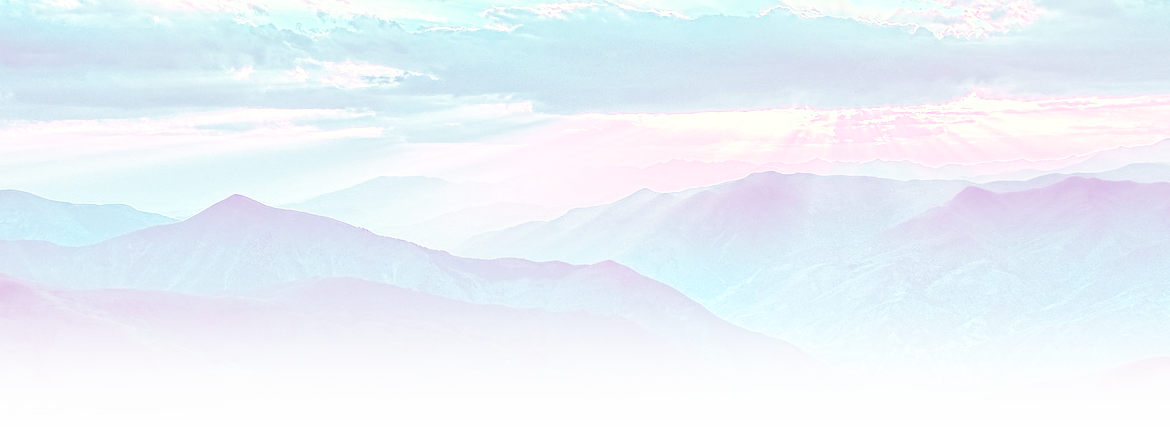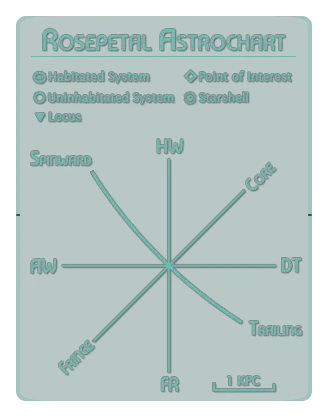Biegjun
Public astrographic record
Property of the Royal Atheneum of Hövnís, Eörpe
Etmyology & Definition
The planet’s name is taken from the native’s language Gjevasudit and is the word for ‘parent’. It’s also used as a word for an individual, animal, spirit, or place one belongs to (often in the context ‘amu jan biegjun’, meaning ‘part of my heart’). Biegjun is made from the two roots ‘bieg’ (meaning ‘child’, ‘important’, and ‘heart’) and ‘geijun’ (meaning ‘protector’). Bieggjan, the native’s word for themselves and their people, is of similar origin with the roots ‘bieg’ and ‘jan’, translating to ‘child me’ or ‘my heart’ depending on context. It used to be the word for ‘child’ but most modern branches of the language have replaced it with a variation of ‘mabieg’.Astrography
Biegjun is located in the Helsvuht system, along Asurla’s Arm and within one of the Suszukoro Reserve Zones of The Ascendancy.Atakieh and Likhuus blind us with their radiance while they look down upon their children. Helsiinak and Vuhttnja stretch out their arms, comforting us with their warmth and love. Nuuhavaj would too, had they not been wandering lost. As they sleep, Seempola stalks closer and opens their maw to devour us all.
Orbit & Rotation
Biegjun has a rotational period of 20 standard hours (called a day), and a full orbital cycle of 360 orbital periods (or 360 days / 1 year). As Biegjun is affected by five of its systems six suns plus the reflector-effect of its own planetary rings, one could argue day and night are relative concepts on the planet, and seasons are also not entirely straightforward. You’ll find more detailed information on this in the Cycles/Seasons sections under Geography.The Rings
Biegjun features a set of equatorial planetary rings that, depending on one’s current geographical location, can take up most of the visible sky. When not drowned out by the brilliant, intense light of the system’s many suns, the rings have a soft pinkish hue during the daytime hours. With decreasing light levels this coloration will gradually shift over to a more menacing red coloration. From time to time, especially when the moon is the closest to the planet, ice blocks and asteroids will break loose from the rings and fall down into the planet’s atmosphere. Most are too small to make it all the way to the surface, but the landscape features several strange valleys that likely are former meteor impact sites.The Moon
Some distance away from the planet’s rings, a lone moon circles Biegjun in a retrograde orbit. Its movement isn’t fully spherical and won’t be visible on the sky except during the twilight hours of normal spring, autumn and winter. During normal spring and autumn twilight hours, the moon is far enough away that it’ll only be a tiny red disc far away in the distance and won’t have any meaningful impact on the planet’s magnetic field or weather patterns. During normal winter the moon creeps the closest and will be a significantly more menacing sight on the twilight sky. When close it can cause some erratic and dangerous weather and will also contribute to an increased likelihood of natural disasters and impact events.Solar Eclipses
Biegjun can experience two types of solar eclipses: either the more typical one where the moon moves in between either of the suns, or when a binary pair eclipse each other. The latter is rarely very noticeable, as it only causes a slight dimming of the light levels. The inner suns eclipse with the moon about once a week, leaving the planet significantly darker for a couple of hours. The outer, much brighter, suns eclipse roughly once a year, and this event can last up to five days.Seasons
Due to its 90° axial tilt, Biegjun rotates perpendicularly to its central suns and that causes some peculiarities regarding the seasons and the day/night cycle. The planet is primarily affected by its central binary suns, the farther out orbiting binary suns and its own planetary rings, while the last two smaller suns are too weak to particularly affect light levels or temperature. Due to the interactions between the two sets of binary suns, one could describe the planet as having two sets of four seasons each. These two sets will slowly cycle over the course of 50 years, having entirely switched places after 25 years. They’ll be distinguished as the Bright Seasons and Normal Seasons going forward.
Bright Spring/Autumn & Spring/Autumn
One hemisphere will be facing the outer binary suns, while the equator faces the central suns, and other hemisphere will only receive light from the central suns during daytime. During the night, the other hemisphere receives reflected light from the moon and planetary rings. On average the temperature difference between a bright spring/autumn and normal spring/autumn will be about 1-2°C, attributed to the distance between Biegjun and its outer suns. The hemisphere in the bright spring or autumn season will experience daylight during its entire rotational period, though with daytime being the same level of blinding bright as bright summers and the nighttime experiencing normal levels of daylight. There’ll be sunrise in the north and sunset in the south, but they’ll generally won’t be as noticeable as during normal spring or autumn. The hemisphere in the normal spring or autumn season will experience brighter than normal daylight during daytime (though not as bright as during bright summer), and twilight conditions during its nighttime. There’ll be a sunrise in the north and sunset in the south, both very spectacular with the moons and rings taking on a magenta to red tint that’ll spread down to the planet. The tinted lighting will continue to last throughout most of the nighttime and fade the next sunrise. Either version of spring or autumn lasts for typically 142-144 days, with its nighttime segment on average being 4 hours long.Bright Summer & Summer
One hemisphere faces the outer suns while the other faces the central suns. The entire planet will be locked in daylight at all hours for the entire length of the season. The bright and normal summer season is typically around 70-72 days long. The hemisphere facing the outer suns will be drenched in blinding levels of daylight, the other in bright but not as bright daylight, and the equator in roughly the equivalent of normal levels of daylight. On average the temperature difference between a bright summer and normal summer will be about 2-5°C, attributed to the distance between Biegjun and its outer suns.Bright Winter & Winter
One hemisphere will be facing the central and outer suns, while the other will be facing away from all suns in the system. This hemisphere and most of the equator will be locked in normal levels of daylight at all hours for the entire length of the bright winter season. The bright and normal winter season is typically around 70-72 days long. The hemisphere facing away from the suns will only receive reflected light from the moon and planetary rings during the normal winter season, causing it to be locked in twilight conditions at all hours. The planetside will be bathed in a magenta to red tinted light coming off the reflection from the moon and planetary rings, and aurora events will be very frequent. As this is also the time of the year the moon is the closest to the planet it’s also more common for natural disasters, storms, and meteor showers to occur.Geography
The planet features a single landmass dotted with seas and lakes. The exact landscape varies depending on climate but is on average very rocky and there’s an abundance of hills, mountains, and valleys in between pockets of forests, plains, steppes, tundras, and taigas.Atmosphere
Biegjun features a type I solagen-base atmosphere and is composed of 77.08% solagen, 20.95% oxygen, 0.93% argon, 0.04% carbon dioxide, and trace amounts of other gases. Water vapor accounts for roughly 28% of the atmosphere by mass.Hydrosphere
Biegjun’s surface water consists primarily of seas, lakes, and rivers, with the larger bodies of water concentrated along the temperate band. Except for during the normal winter season, temperatures will rarely drop low enough to freeze anything but smaller lakes and streams. Water can also be caught as fog or mist, and evaporated water in the atmosphere can fall as rain, hail, or snow depending on the weather and temperature. About 70% Biegjun’s total water mass is found below ground, primarily beneath the mountainous regions near the north and south pole in forms of underground lakes and rivers. The largest reservoir of underground water was discovered beneath the south pole’s Kuusamaj mountain range, where rainwater from the surface pools down into a massive subterrain lake, and from there is transported deeper into the vast network of tunnels and caverns that make out the main subterrain habitat of the Tjaetsiimaj. Most of these outlets resurface eventually, either as spring lakes, geysers, or feeds large wetland regions such as the Osatthjuvi moors and Pahlamuut swamp.The Blueing Effect
Astrographic Data
Planetary Data
Subarctic
Arctic
Steppe
Taiga
Forest
Mountain
Kuusamaj
Osatthjuvi
Pahlamuut
Lejipolma
Muursamul
Piddes
Soomja
Taljakka
Tjaetsiimaj
Tursatjek
Vojjsakka
Societal Data
Lusoyan, >0.01%
Lomlaa
Ljuuhovii
Tasuuhji
Goosujati
Voehn
Suszukoro Research Station
Yggdrasil D-44 Shipwreck







The level of detail in this article is breathtaking, and really inspires me to write more for my planets <3 :D
Thank you Mochi, I'm really flattered. Biegjun is probably the most ambitious piece of writing I've ever done, and its for sure the one I've poured the most time into research for. I wasn't sure at first my ideas (I think this all originates from a random "what if Earth had no night?") would turn out into something that was somewhat viable. But it for sure has been a really enjoyable journey filled with learning all manner of random things about astronomy, geology, and biology. :)